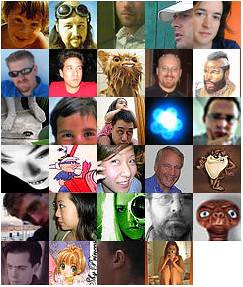Gravity is a fundamental force in the universe. We're not sure what it is, or how it works, but we can observe and measure it's effects. The
Law of Universal Gravitation can expressed as an equation: F=G*(m
1m
2/r
2), where F is the gravitational force between two objects, G is the gravitational constant, m is the mass of the objects, and r is the distace between the two objects.
Likewise, I believe there must be ann equivalent principle, that expresses the force that binds together an online community (that I will call, for reasons that will become clear later, the Group Law of Universal Gravitation, or GLUG).
The GLUG says: F=G*(C(S-N)/P
2)
- F = The Gravitational force the community applies to you
- C = The member's level of contribution to the community (your "mass")
- S = The level of relevant activity in the community (Signal)
- N = The level of irrelevant activity (Noise) � Signal and Noise taken together represent the "mass" of the community
- P = The Priority you place on the Focus of the community in your life (the higher the number, the lower priority) � roughly equivalent to "distance"
- G = The tendency of humans to bond together - the "gravitational constant"
I mean GLUG as a metaphor, obviously, as these values can't truly be quantified, but I think it's a pretty good illustration of the point I've made in some earlier posts. If your customer base is well represented in this community, or you're trying to encourage a community that exists around your product, look at this equation and consider this: what of these values can you influence?
Not G, and it's very hard to influence P; you can try to reduce, or at least
not increase N, which, once it reaches a value higher than S, causes any community to explode in a shower of spam. You can obviously effect S, and this is usually where marketing efforts start (you need to think carefully first, so as not to increase N). Every community needs valuable content and contributions - think of this as the icebreaker activity at a party, or the "life of the party" type people you invite to encourage conversation.
Something that's often overlooked, however, is your ability to increase C. Giving community members good tools to become more active participants (which is what an open bar at a networking event is intended to do � <grin/>) can have a significant impact. Slashdot's "reputation" is an excellent example of a tool that encourages C, by giving people a reason to post. Flickr's deceptively simple "post to Forum" button beside every one of your photos is an excellent example. Until I started to use it, I never would have thought myself a valuable contributor to any community related to photograpy (
thanks again, Stewart).
 This post is Del.icio.us!
This post is Del.icio.us!

 Subscribe via RSS
Subscribe via RSS
